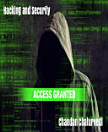Numerical Approaches To 3D Magnetic MEMS
Zoltan Nagy
des. del 2011 · GRIN Verlag
Llibre electrònic
81
Pàgines
family_home
Apte
info
reportNo es verifiquen les puntuacions ni les ressenyes Més informació
Sobre aquest llibre
Master's Thesis from the year 2006 in the subject Engineering - Mechanical Engineering, grade: A, Swiss Federal Institute of Technology Zurich (Institute of Robotics and Intelligent Systems), language: English, abstract: The present work investigates the potential of the finite element method (FEM) in the design process of magnetic Micro-Electro-Mechanical-Systems (MEMS). The magnetic forces and torques acting on a magnetic body are of great importance in wireless actuating principles. Good models are required to allow for precise and predictable motion of the magnetic body. However, analytical results are only available for simple geometries and experiments are often time consuming and may have a certain number of uncertain parameters that may influence the results. Numerical methods, and in particular the finite element method, offer the possibility to study a magnetic body with known material properties in a well defined environment. Consequently, in this work, a method is proposed to calculate the net body torque on arbitrarily shaped bodies in a homogeneous magnetic field using the commercial finite element software Ansys . In addition, a procedure to de- termine the demagnetization factors of these bodies is given. The code is first validated by the known analytical results for an ellipsoid. As an application, the demagnetization factors, as well as the net magnetic torque on brick shaped bodies and the IRIS Microrobot are calculated. A method is proposed to predict the torque acting on the Microrobot analytically. However, experimental results are necessary to confirm this method. Furthermore, Ansys is used to model magneto-structural coupling that is, the motion and deformation of a magnetic body due to an external magnetic field. Two devices are presented (as case studies rather than as actual design concepts), the magnetic resonator and the magnetic scratch drive actuator (MSDA). A quasi- analytical model for the static deflection of the magnetic resonator is given and good agreement with the finite element model is obtained. The MSDA is modeled to show the potential of Ansys in modeling MEMS devices, as additional to the coupling effects, contact elements and spring elements are introduced. Again, experimental results are required.
Puntua aquest llibre electrònic
Dona'ns la teva opinió.
Informació de lectura
Telèfons intel·ligents i tauletes
Instal·la l'aplicació Google Play Llibres per a Android i per a iPad i iPhone. Aquesta aplicació se sincronitza automàticament amb el compte i et permet llegir llibres en línia o sense connexió a qualsevol lloc.
Ordinadors portàtils i ordinadors de taula
Pots escoltar els audiollibres que has comprat a Google Play amb el navegador web de l'ordinador.
Lectors de llibres electrònics i altres dispositius
Per llegir en dispositius de tinta electrònica, com ara lectors de llibres electrònics Kobo, hauràs de baixar un fitxer i transferir-lo al dispositiu. Segueix les instruccions detallades del Centre d'ajuda per transferir els fitxers a lectors de llibres electrònics compatibles.






